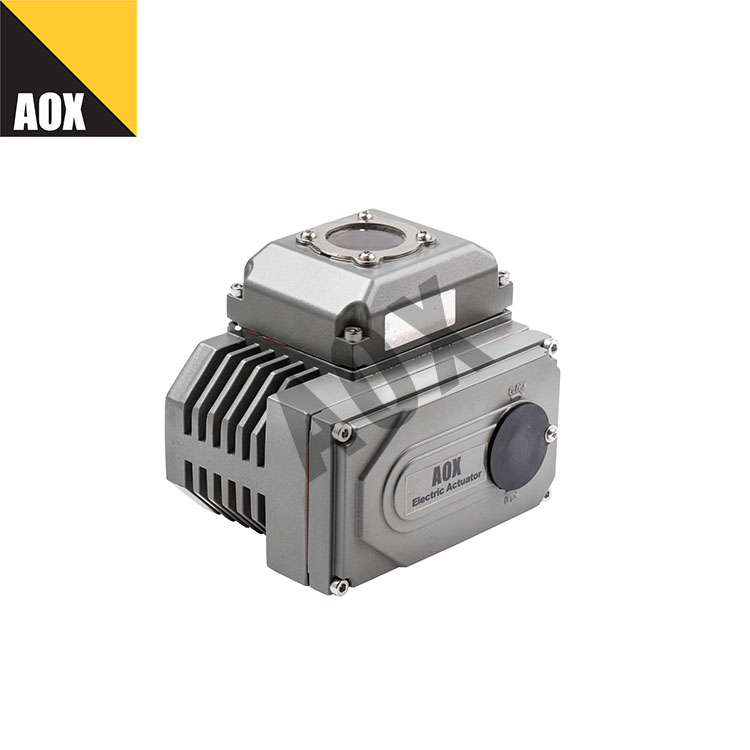
- English
- Español
- Português
- русский
- Français
- 日本語
- Deutsch
- tiếng Việt
- Italiano
- Nederlands
- ภาษาไทย
- Polski
- 한국어
- Svenska
- magyar
- Malay
- বাংলা ভাষার
- Dansk
- Suomi
- हिन्दी
- Pilipino
- Türkçe
- Gaeilge
- العربية
- Indonesia
- Norsk
- تمل
- český
- ελληνικά
- український
- Javanese
- فارسی
- தமிழ்
- తెలుగు
- नेपाली
- Burmese
- български
- ລາວ
- Latine
- Қазақша
- Euskal
- Azərbaycan
- Slovenský jazyk
- Македонски
- Lietuvos
- Eesti Keel
- Română
- Slovenski
- मराठी
- Srpski језик
How to Install a Part Turn Electric Actuator in your Industrial System?
2024-10-30

What are the benefits of using a Part Turn Electric Actuator in an industrial system?
A Part Turn Electric Actuator offers several benefits, including:- Greater precision and control over operations
- Improved efficiency and productivity
- Enhanced safety and reliability
- Reduced maintenance and repair costs
What are the different types of Part Turn Electric Actuators?
There are several types of Part Turn Electric Actuators available, including:- Quarter-turn electric actuator
- Half-turn electric actuator
- Multi-turn electric actuator
- Rotary electric actuator
How to install a Part Turn Electric Actuator in an industrial system?
The installation process of a Part Turn Electric Actuator depends on the specific application and requirements. However, the basic steps involved are as follows:1. Mount the actuator onto the valve or damper shaft properly
2. Check the accuracy and alignment of the mounting
3. Connect the actuator and control device using suitable wiring methods
4. Configure the settings and parameters of the actuator as per the application requirements
5. Test the actuator for proper operation and make any necessary adjustments
What are the maintenance requirements for Part Turn Electric Actuators?
Part Turn Electric Actuators are low-maintenance, but they do require periodic check-ups to ensure optimal performance. Some common maintenance tasks include:- Checking the wiring and electrical connections for damage or wear
- Cleaning the actuator and removing any debris or dirt buildup
- Lubricating the gears and bearings to prevent wear and tear
- Testing the actuator for proper functionality and responsiveness
In conclusion, a Part Turn Electric Actuator is an indispensable component of any industrial system that requires precise and automated control. Its benefits include improved efficiency, productivity, and safety, as well as reduced maintenance and repair costs. With proper installation and maintenance, these actuators can offer reliable and long-lasting performance.Zhejiang Aoxiang Auto-Control Technology CO., Ltd is a leading manufacturer and supplier of high-quality Part Turn Electric Actuators and related products. We are committed to providing our customers with superior solutions that meet their specific requirements. Contact us today at zjaox07@zjaox.com to learn more about our products and services.
Scientific Research Papers
1. Chen, Y., & Chen, L. (2019). Design of a novel intelligent control system for electric actuators. Journal of Intelligent & Fuzzy Systems, 36(4), 3051-3063.
2. Zhang, Y., & Wang, H. (2018). Research on motion servo control system of electric actuator based on fuzzy adaptive PID algorithm. Journal of Mechanical Engineering Research, 10(2), 1-10.
3. Liu, J., & Zhao, H. (2017). Study on the Stability Control of Electric Actuators Based on Active Disturbance Rejection. Journal of Electrical and Computer Engineering, 2017, 1-12.
4. Zhou, Y., & Wu, W. (2018). A Novel Actuator Fault Diagnosis Approach Based on Multiwavelet and SVM Ensemble. Shock and Vibration, 2018, 1-14.
5. Kumar, R. (2020). Comparative Performance Analysis of PMSM and BLDC Motor Driven Electric Actuator. In 2020 2nd International Conference on Innovations in Electronics, Signal Processing and Communication (IESC). IEEE.
6. Liang, N., & Liu, Y. (2017). Development of intelligent control system for electric actuator. In International Conference on Materials Science and Mechanical Automation (ICMSMA), 784-790.
7. Ren, H., & Wang, J. (2018). Application of Improved PID Control Algorithm in Electric Actuator Position Control System. In 2018 International Conference on Advanced Manufacturing and Materials Engineering (ICAMME 2018). Atlantis Press.
8. Wang, J., & Yang, N. (2019). Design of a New Type of Control System for Straight Travel Electric Actuator Based on PID Control Algorithm. In 2019 International Conference on Intelligent Manufacturing and Intelligent Materials (ICIMIM 2019). Atlantis Press.
9. Zhang, H., & Lu, K. (2020). Modeling and Simulation of Electric Actuator Control System. In 2020 8th International Conference on Mechatronics and Control Engineering (ICMCE). IEEE.
10. Li, S., & Wang, W. (2018). Research on Control System of Electric Actuator Based on Real-time Monitoring. In 2018 International Conference on Intelligent Transportation, Big Data & Smart City (ICITBS). IEEE.



